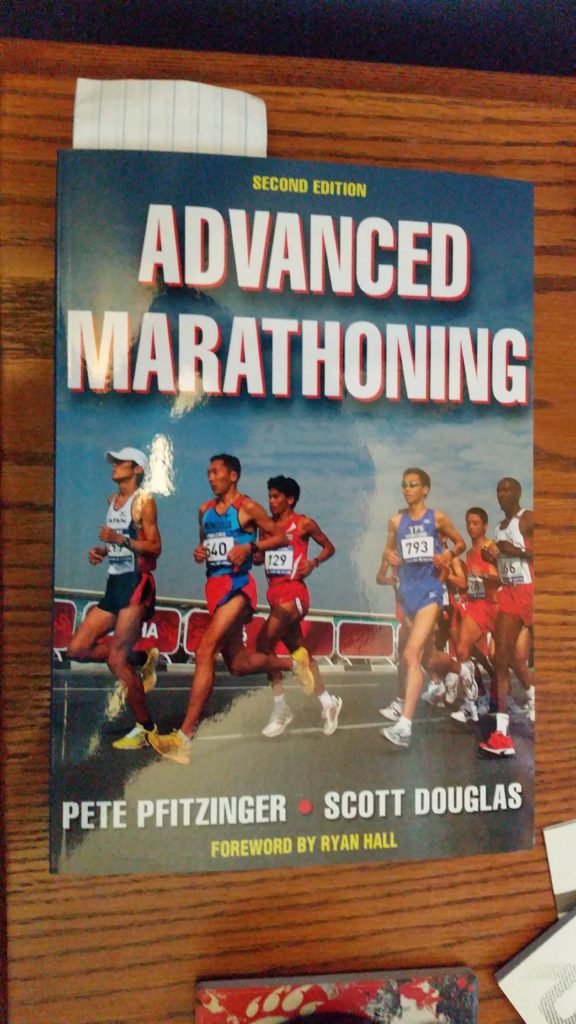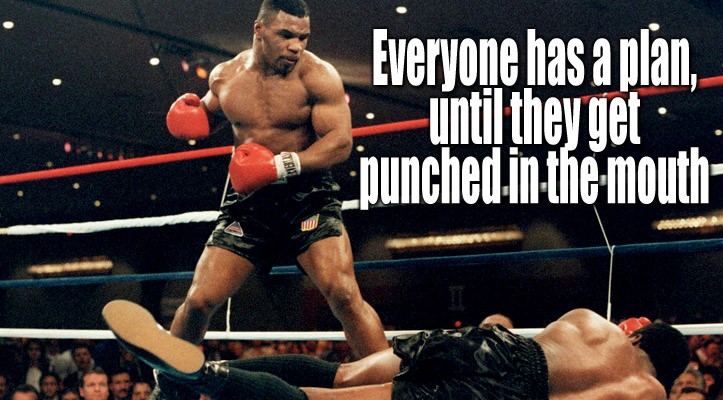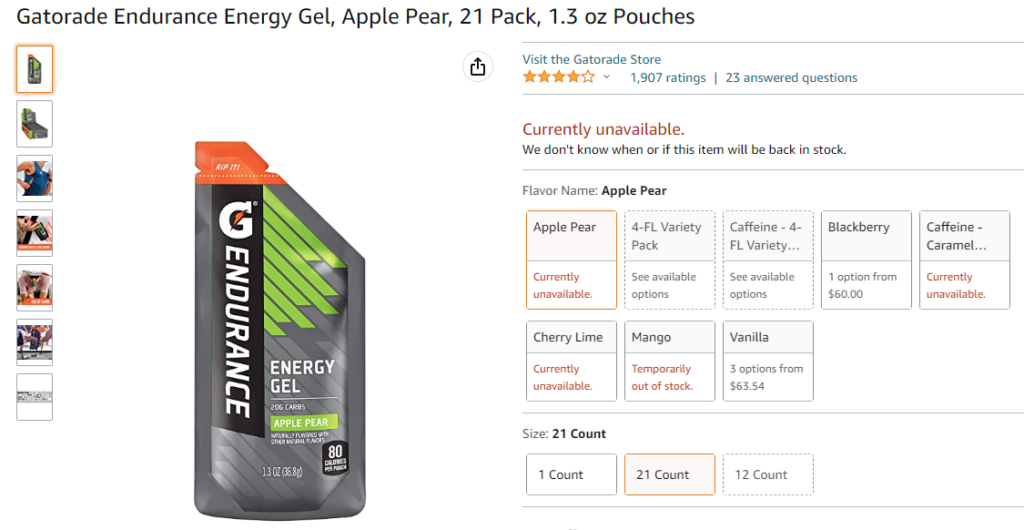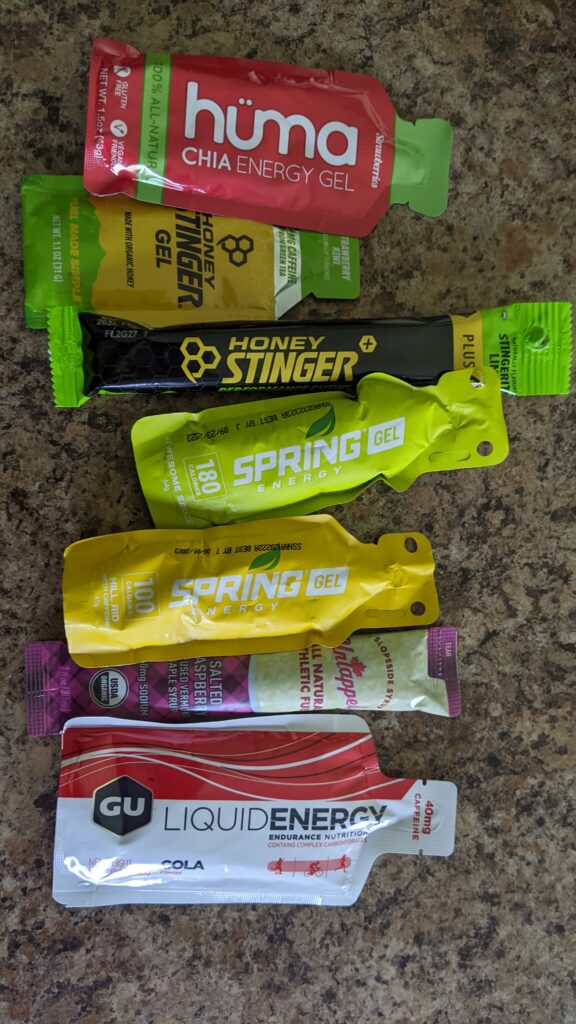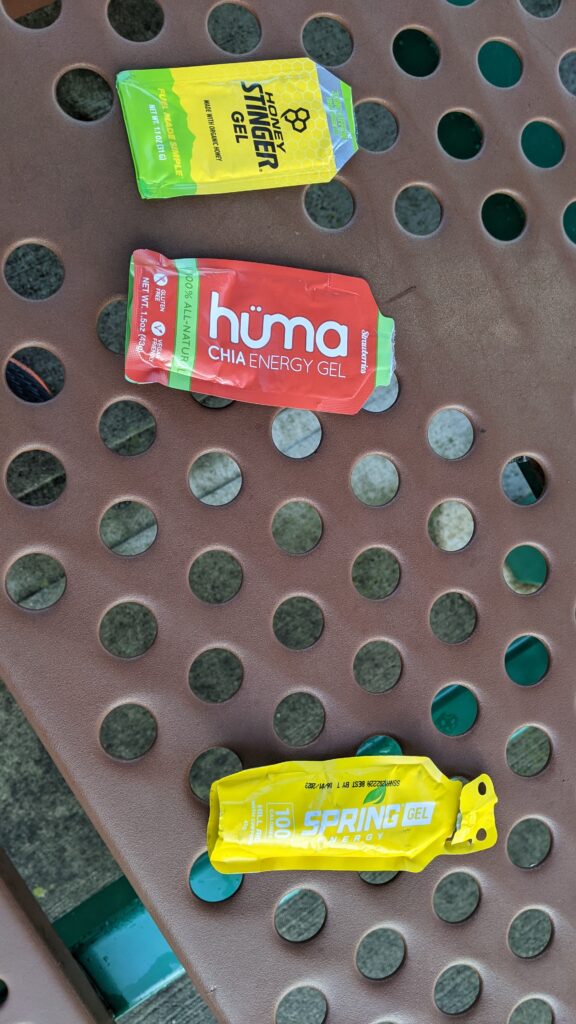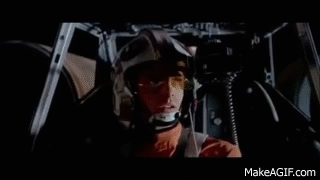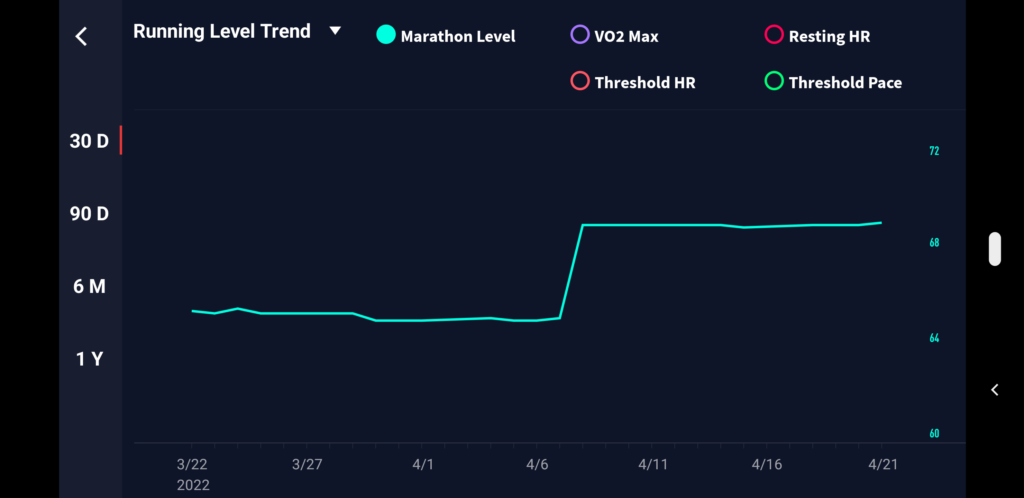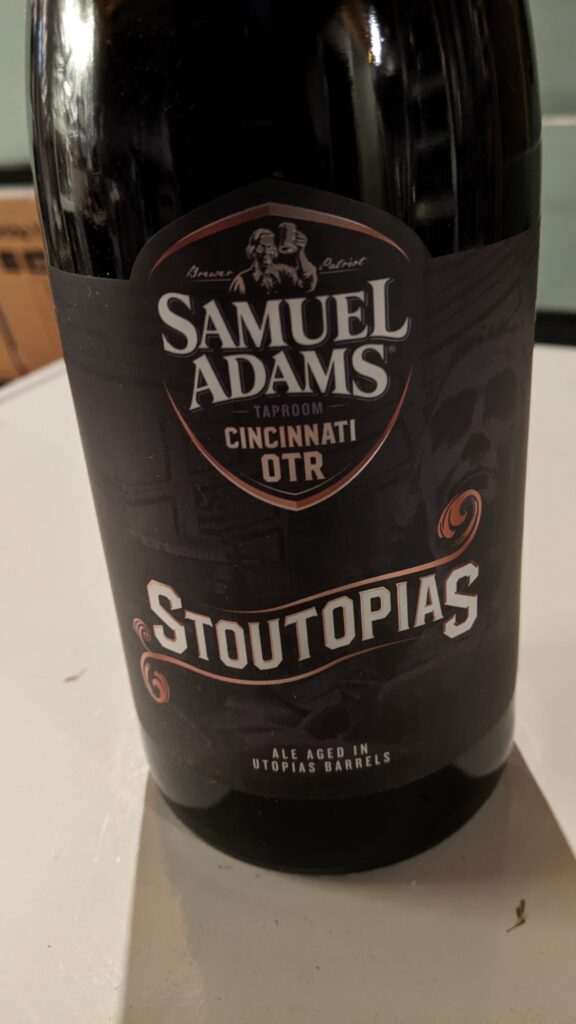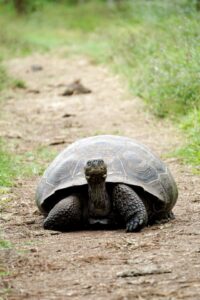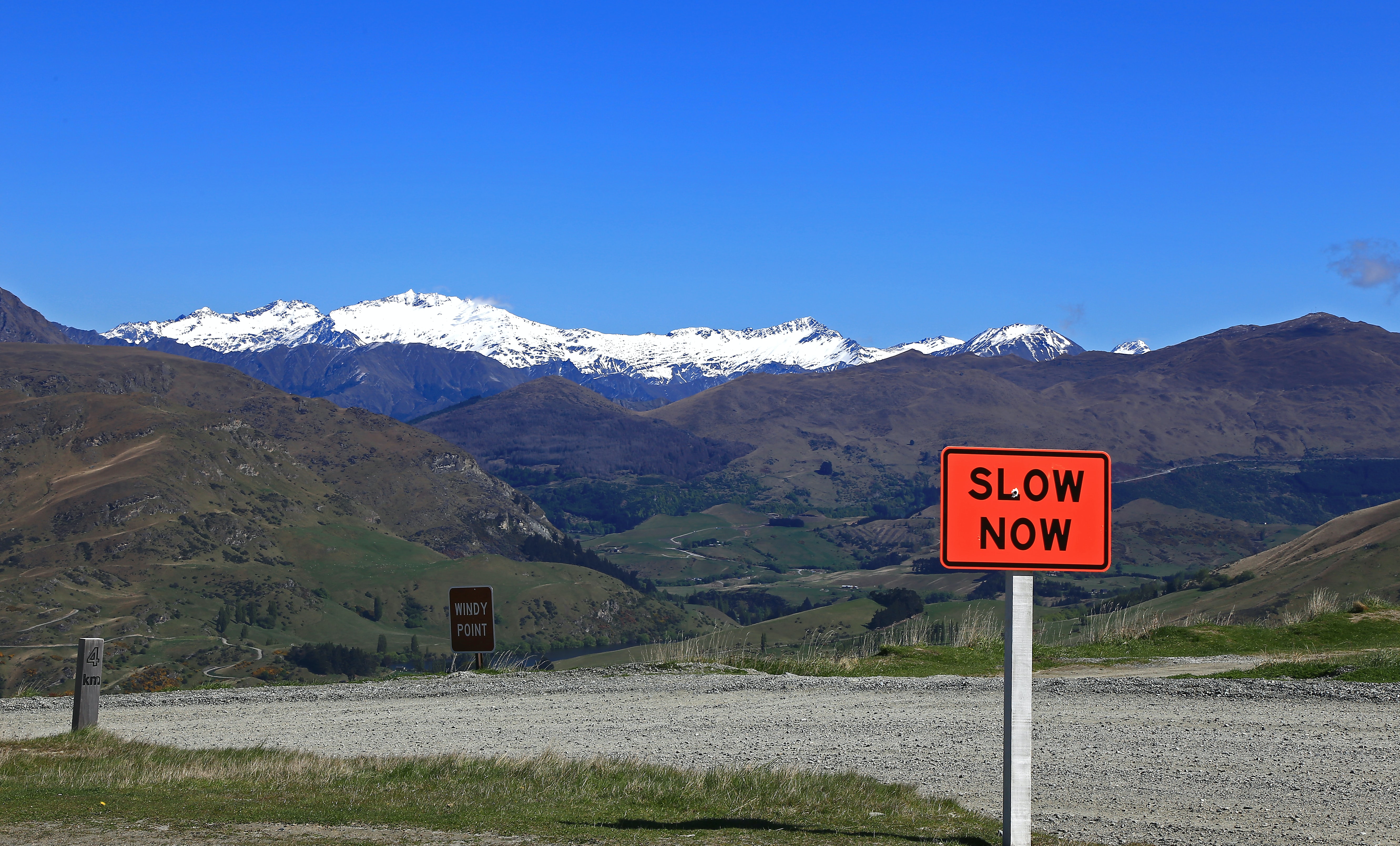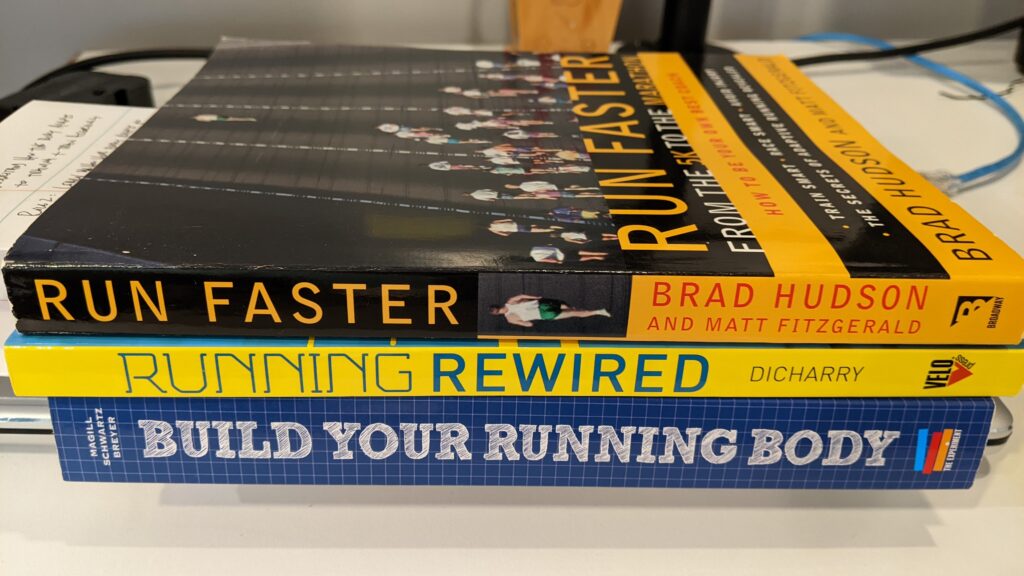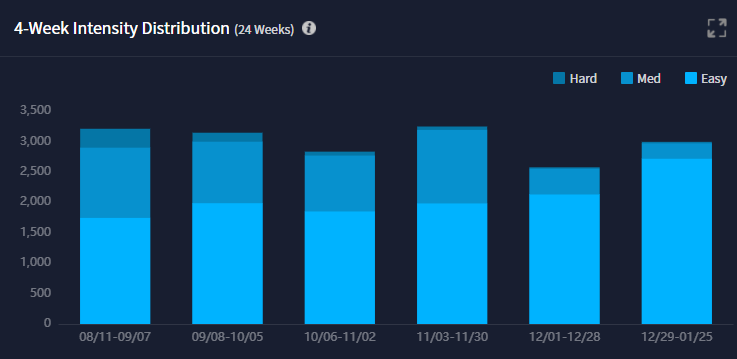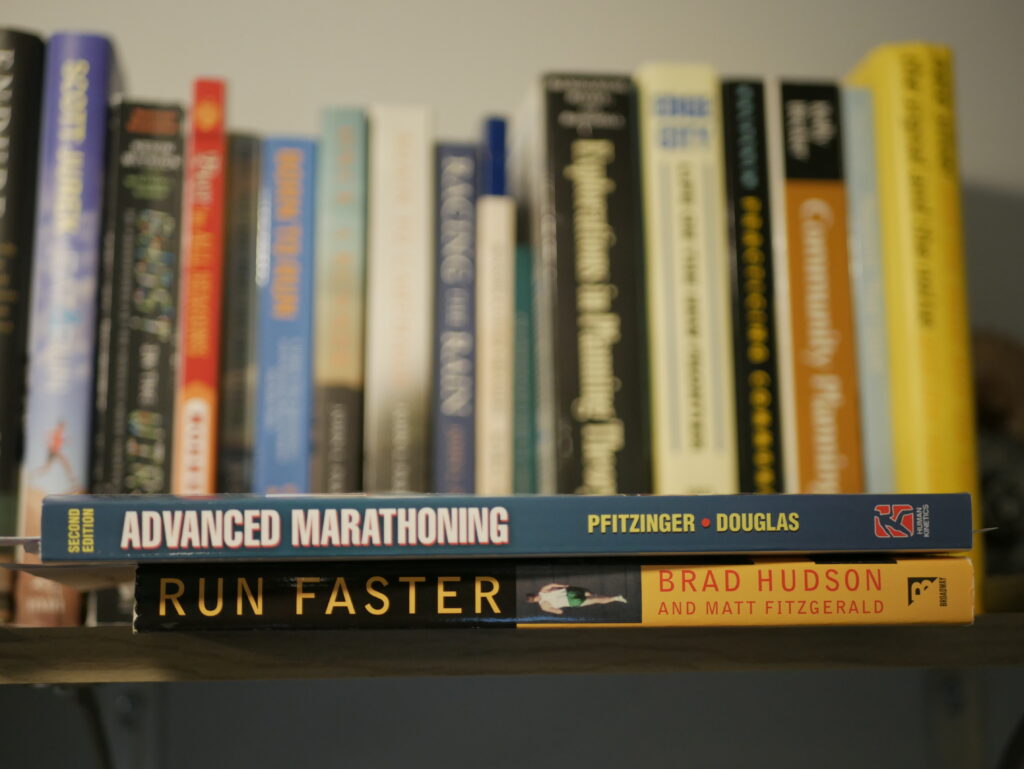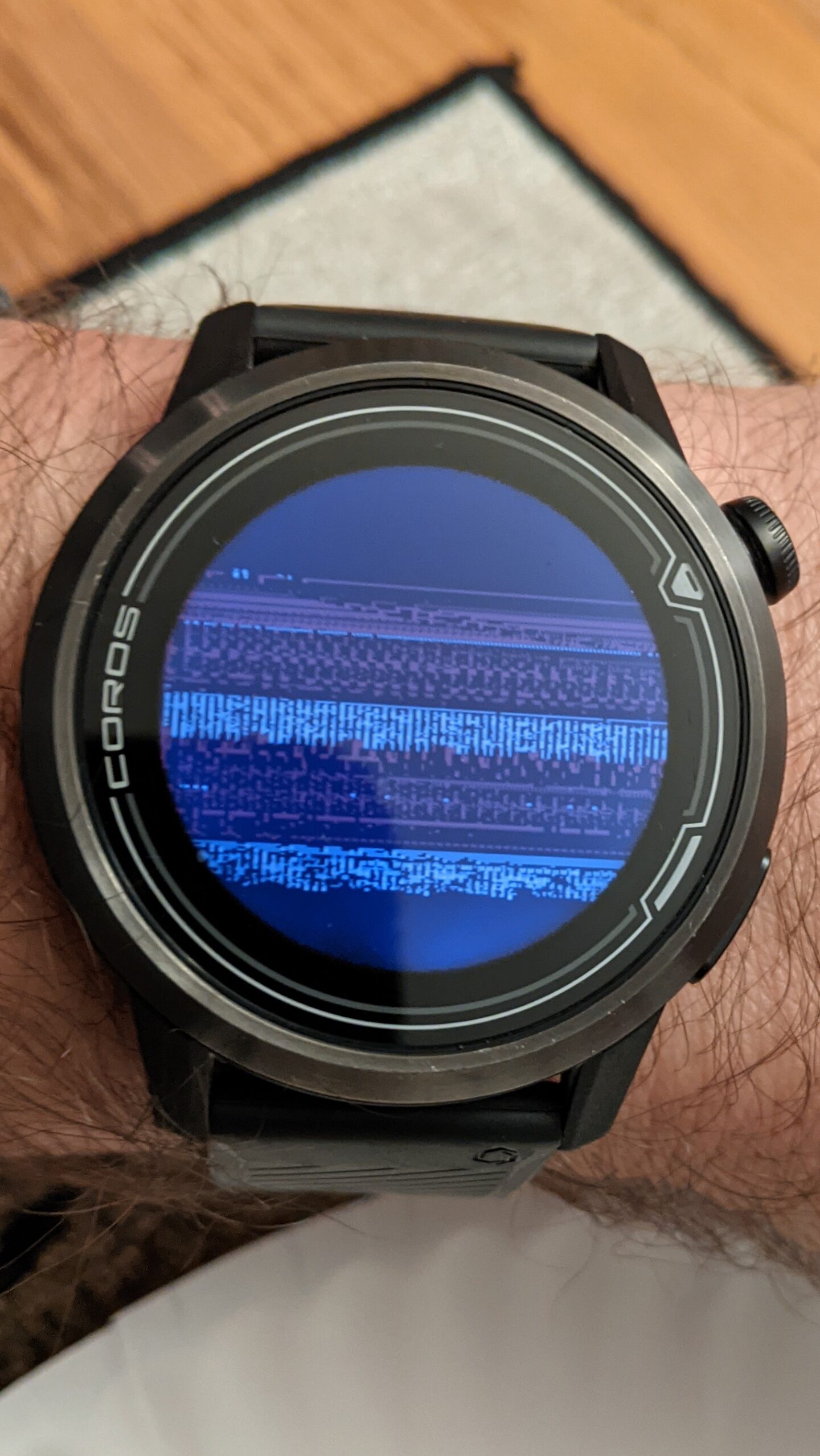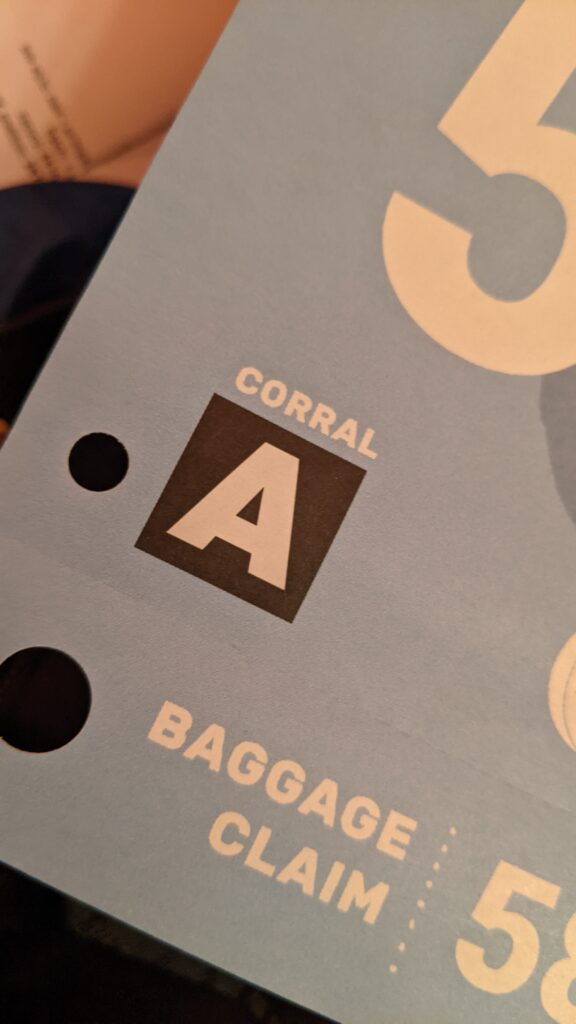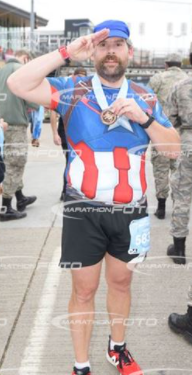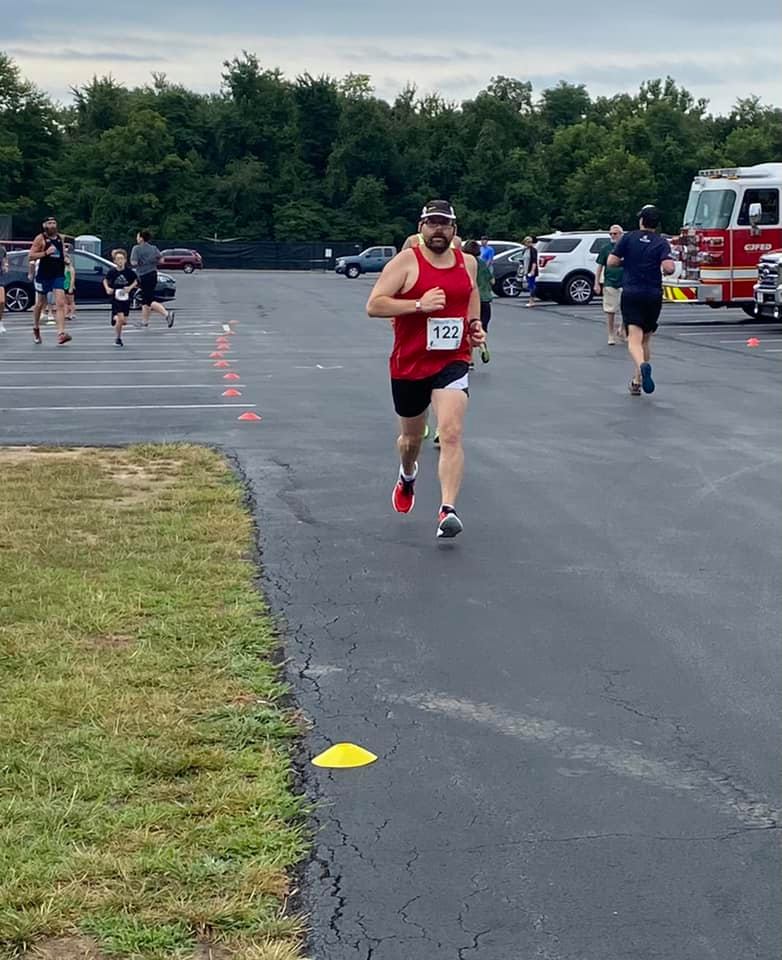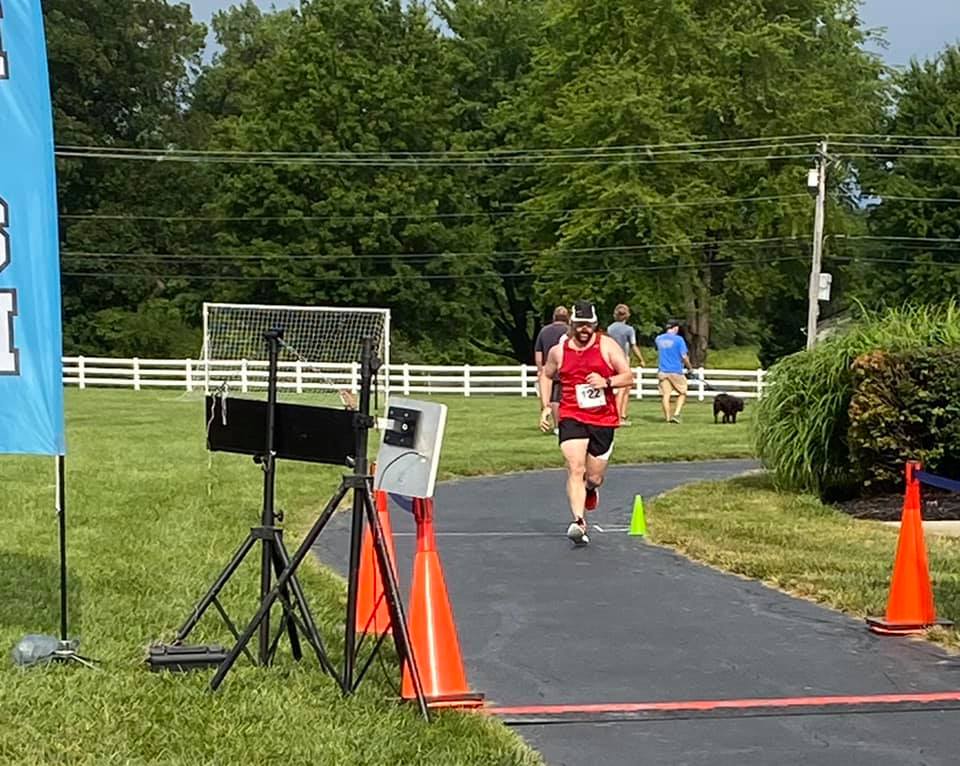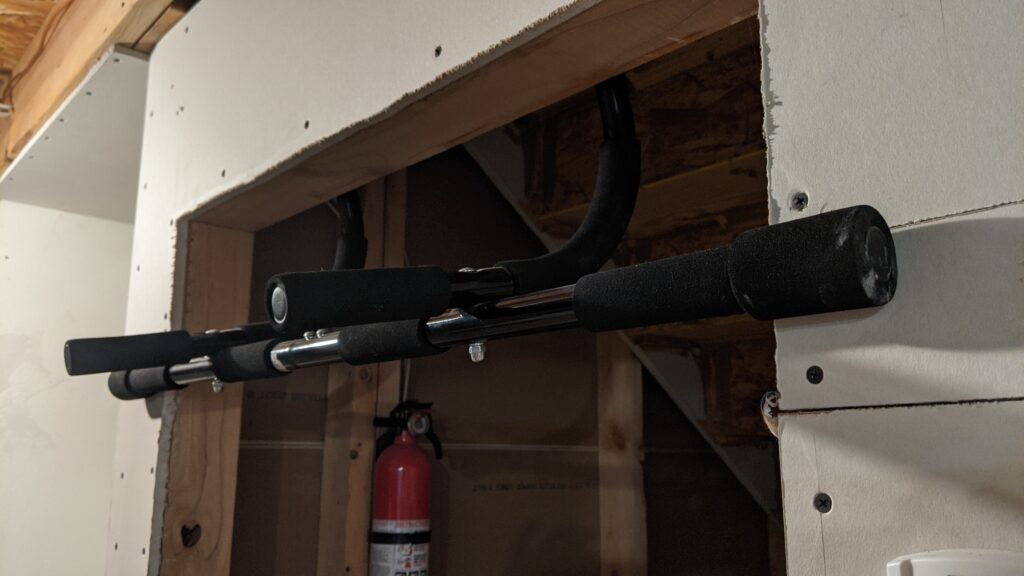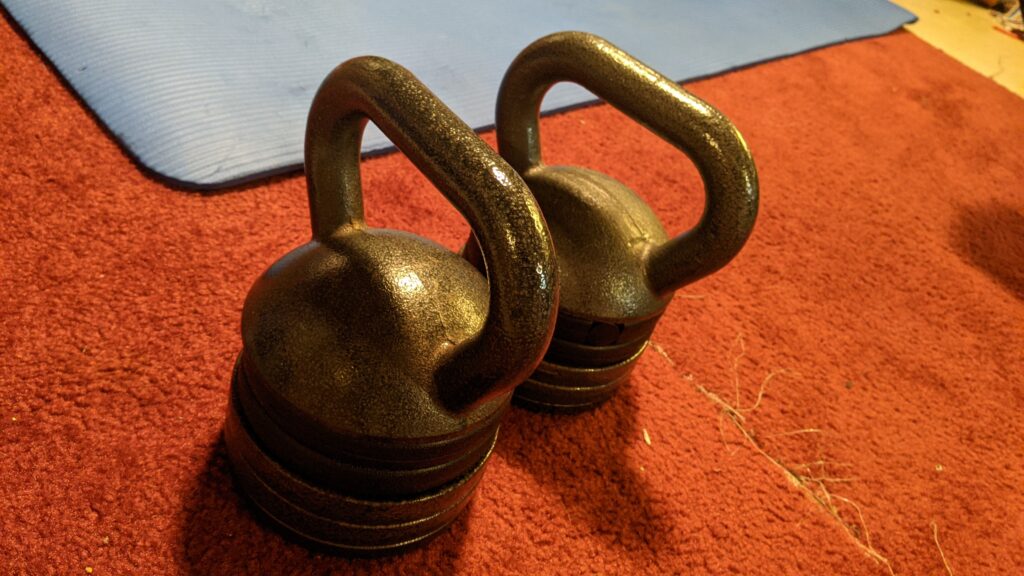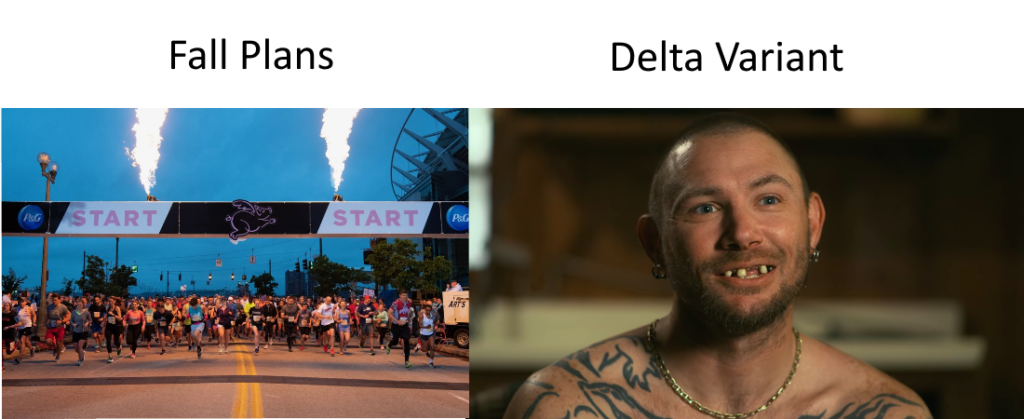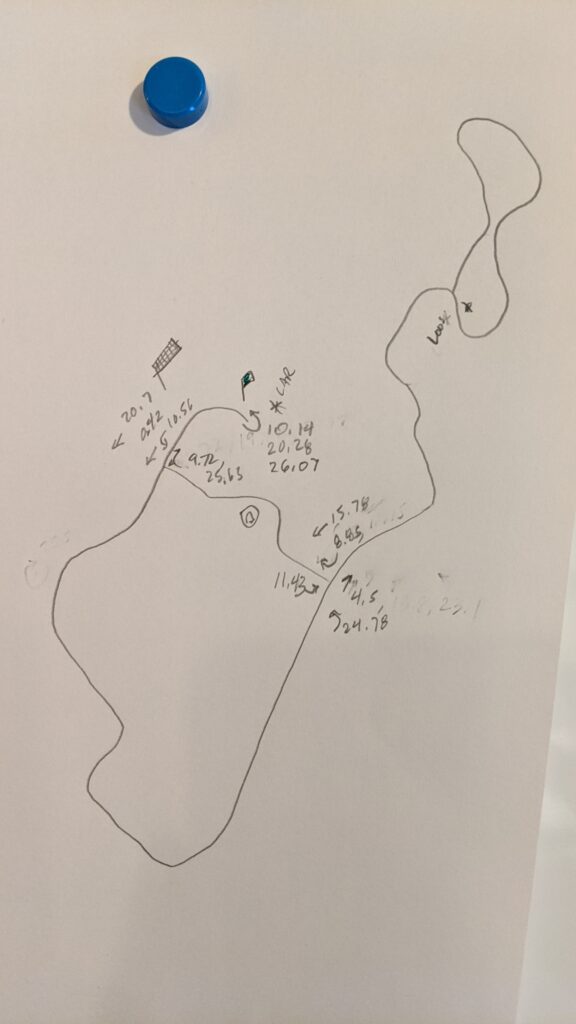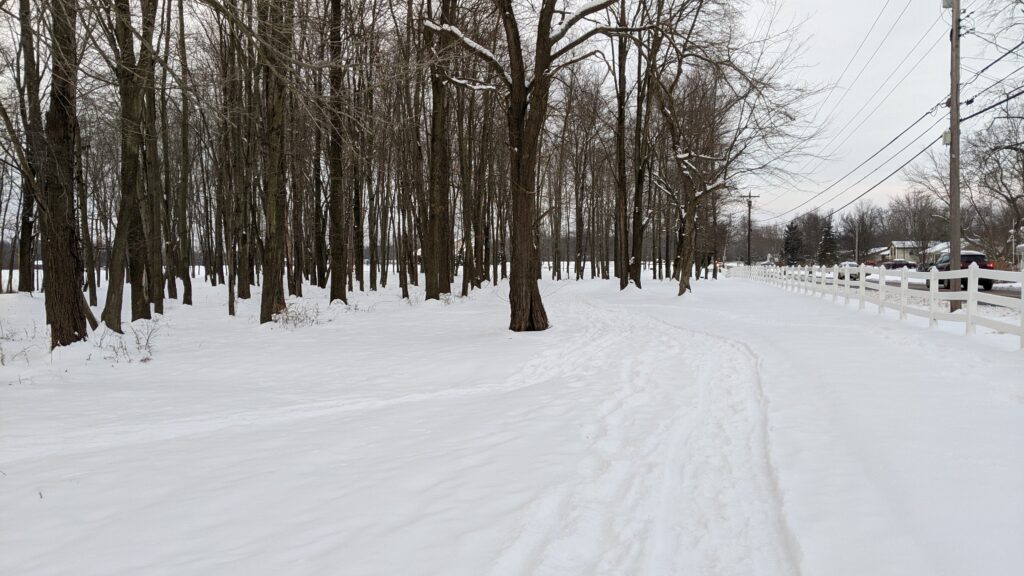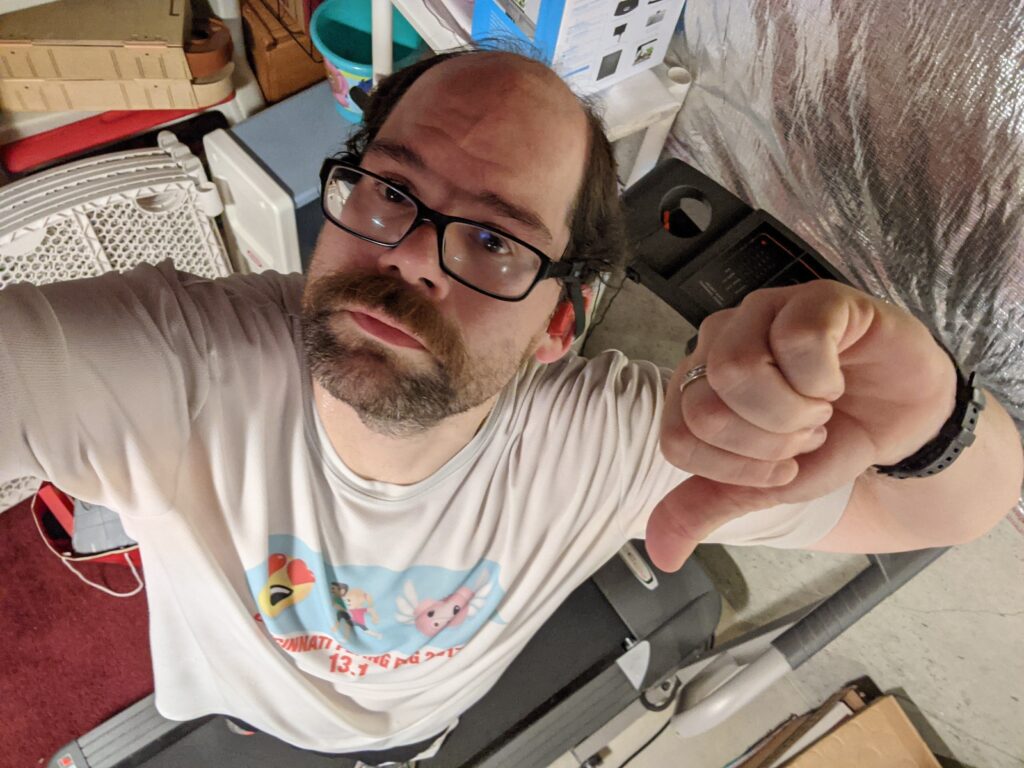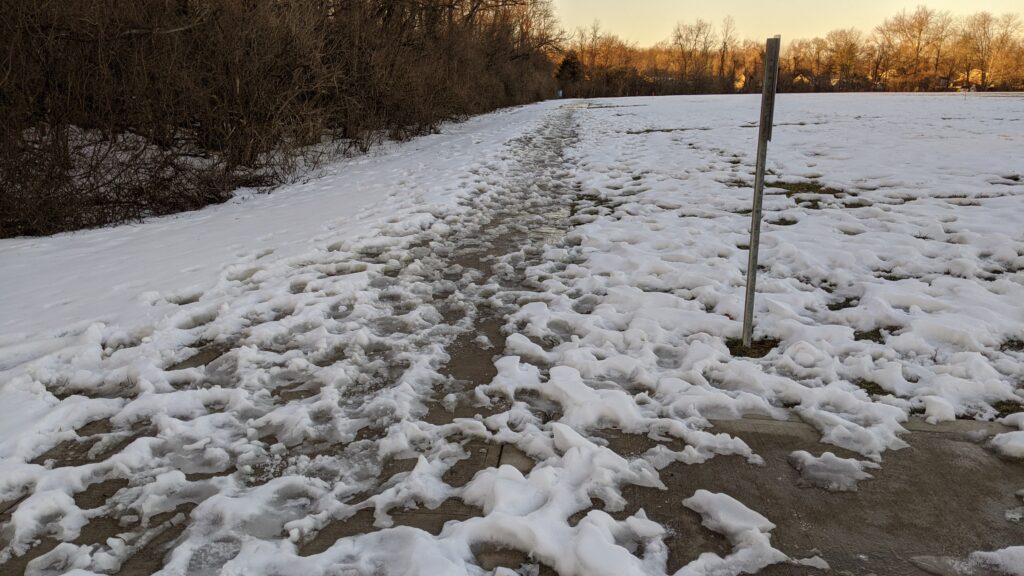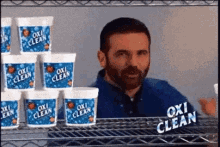The news about the Flying Pig and weather has gone around various media outlets, and my take on it is mixed in the stuff below.
I started my drive into downtown at around 5:00 AM on Sunday morning. Within a minute after I left, I had to tell myself to stop watching the light show in the sky and concentrate on the road ahead. I arrived to my semi-secret parking spot to find a no parking sign on it, so I drove to my backup spot in a lot nearby. I checked the phone where I saw that the PigWorks app posted that they anticipate an on-time start. I dropped my phone – still on do-not-disturb – into my bag with my wallet, a towel, a pair of compression socks, and my 20th Anniversary Flying Pig Marathon jacket and set out to drop it off in the baggage bus and use the restroom one more time.
As 6:15 AM approached, I took the first of five energy gels, a caffeinated Honey Stinger that I talked about in my last post. There was a small pre-race announcement that talked about a coming thunderstorm that was intense. After the presentation of the colors and singing of the National Anthem, we were off to the tune of Prince’s Party Like it’s 1999!
As I crossed into Newport, I recalled advice to not check my watch through the first few miles. Or the last few. Or any in-between. I decided to throw that advice out the window and checked my first split: 8:35 for a congested first mile. No complaints, although I did want to be faster. The next two sped up a little, but maintained some restraint at 8:17 and 8:24. I knew I was doing better than last year since I’m fairly certain all these splits started with a 9.
As I crossed back into Cincinnati from Covington, the sky started looking ominous and there was another light show. I was making jokes with a nearby runner (that said something like “uh oh”) that the bridge would take a lightning strike for us… and that hopefully it would hit the ugly side.
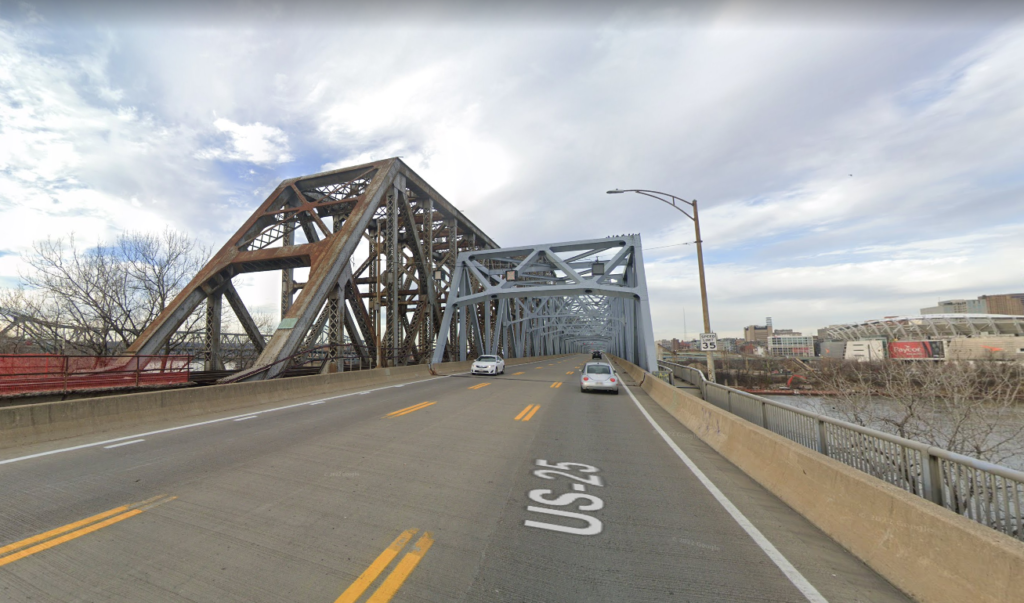
As I snaked my way up 3rd Street and Gest Street to 7th Street, the sky got darker and opened up into a torrential downpour complete with lots of lightning. As we went across 7th, I noticed that the cheering from the crowd seemed a lot louder through here. Nearing the end of this downtown stretch, I heard and saw someone yelling “Shelter in place!” They were wearing all black that I recall (keep in mind that I had my eyes on the road and other runners through here, so that detail is a little fuzzy). I continued on in the large pack of runners that I was in and was throwing down miles in the low-8s (my mile 4 and 5 splits were 8:07 and 8:08, a faster than goal). As I came to the end of 7th, there is a course clock that was still running and I took that as a signal to keep going. I took my second gel, another Honey Stinger.
Meanwhile, the approach to the Clay Wade Bailey was a little wet, as shown in the video on this page (I’d link directly to it, but Facebook sucks and I can’t get a link).
I expected the hill to be tough and allowed my pace to slow going up. I decided that it would be smarter to not destroy my legs over a hill so early in the race and just kept the effort going. As I headed up Gilbert Street The weather started to brighten a little (or maybe it was the lack of shadows from the buildings) and the guy with the megaphone and the letter F was across from Channel 9’s studios telling us that Mr. Gilbert called and said we need to get the F up the hill. The rain was still pouring and as we made our way up Eden Park Drive and through the first relay stop, the course shifted to the left – relay runners that normally had the left lane now had the sidewalk, and all other runners that normally had the right lane ran in the left lane because the right lane was under water.
We pressed on past Elvis, who was out under an umbrella singing about rain. We pressed up the hill and through the split as the rain started to slow a little. I ignored my splits through this area (they were 8:38 and 9:04) and continued through O’Bryonville and into Hyde Park getting back down into the low 8s (8:21, 8:06, 8:02 – my fastest of the race, 8:16, 8:17, and 8:08). I did hear a great song with an awesome bass line in Hyde Park (I think), but unfortunately marathon fog has taken it away from me. I took my third gel through here – one of my remaining Gatorade Endurance gels. My half split was 1:51:09, which was a lot better than last year (1:57 first half split). I did take a Swedish Fish at the halfway point, and fortunately did not take a volunteer’s fingers with it. I may have been close… my apologies to the volunteer!
The second half started with someone cheering that it gets easier here.
It did not get easier. Even the second half of a glass of poison is easier than the second half of a marathon.
–Narrator
The portions through Madison Place and Fairfax are pretty hilly, and we only get a little bit of a rest in Mariemont between them. While I continued putting down splits in the 8s, it was more mid-8s than low 8s courtesy of the hills and accumulated fatigue. By this point, I was in a pack that had thinned quite a bit. I took my fourth gel, also a Gatorade Endurance gel, and pressed onto Columbia Parkway. The stretch on Columbia would be horrible if it wasn’t for the Cincinnati Parrothead Club out there cheering us on. As I made my way down the ramp onto Eastern Avenue, I was really appreciating the overcast sky that had been occasionally dropping some rain on us.
Eastern Avenue is always a difficult stretch. The first part is mostly desolate – there’s homes but no people for around a mile until you get into the Columbia-Tusculum downtown area (where Streetside Brewing is). Fortunately, there were people through there cheering us on because once the race gets pretty desolate again as it moves through miles 23 and 24. My pace was slowing through this part as expected and it was entirely a combination of small hills and accumulated fatigue. As I went through the last timing mat at mile 25.5, I attempted to pick up the pace a little. I didn’t have much left, but I kept it going. I crossed the finish line in 3:48:19. This time matches my watch indicating that the race time was not stopped for the shelter in place. My last half split was 1:57, while it is a positive split, it’s positive by 6 minutes which I’m fine with.
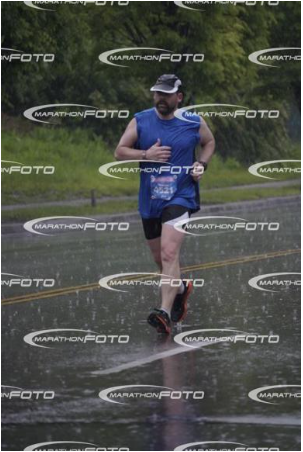
Thoughts
There are a lot of people that are not in the arena (or perhaps in this case I should say ‘not on the course’) that wanted the race postponed to a later time or cancelled altogether.
According to one “expert” on Facebook, lightning kills. I generally try to avoid running in thunderstorms, but it’s not really the fear of lightning that kills fewer than 20 people per year. It’s the fear of drivers that are generally poor when it’s not storming out. Adding limited visibility to already poor drivers into it is a recipe for an injured or dead runner. Drivers killed over 7,300 pedestrians in 2021 and that number has been climbing. Additionally, drivers injure many more pedestrians: over 60,000 pedestrians in 2021 (source for both: NHTSA Overview of Motor Vehicle Traffic Crashes in 2021, Table 3).
Postponing to a later time that day (11 AM was thrown out there on Twitter) just puts us in the middle of the hottest time of the day. From a lot of runners that say their PR was chillier weather proves how important that is.
Canceling would be another idiotic decision (and I doubt PigWorks even considered that). By race day, lots of the money they made from entry fees was either spent or committed to be spent. This means they can’t refund fees because they don’t have the money, and deferring everyone until next year would cause PigWorks to have a significantly smaller income than normal next year. Additionally, with such short notice, travelers would end up having to schedule another hotel, airfare (potentially), and meals. I realize it has happened (New York and a certain hurricane come to mind), but outliers need to remain outliers (and an impending hurricane is an outlier).
The financial costs are in addition to the fact that we all trained 3-4 months for these races. This isn’t a community 5k, this is a pretty massive event. Very few people can wake up one morning and say “I’m going to go run 26 miles”, and only idiots do it without some sort of plan or guidance to ensure they can cross the finish line.

